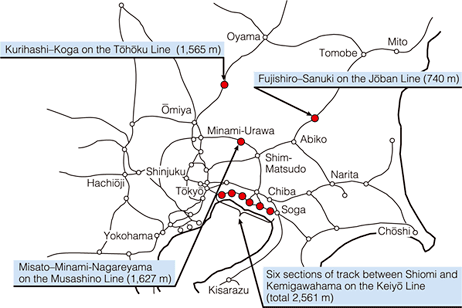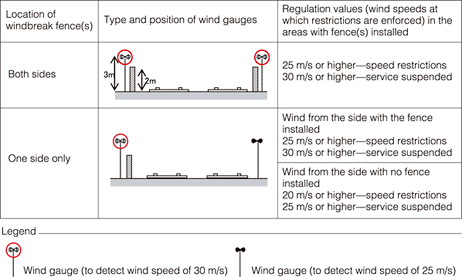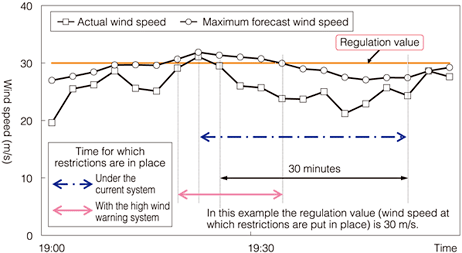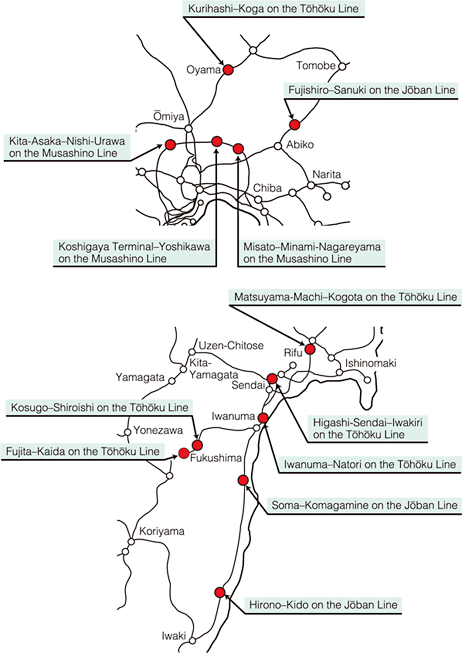Press Releases(Archive)
Measures to Reduce Service Disruptions when Restrictions are in Force due to Strong Winds
East Japan Railway Company
November 7, 2006
In light of the derailment that occurred on the Uetsu Line on December 25, 2005 between Sagoshi and Kita-Amarume, train speed limits based on wind speed were revised* on January 19, 2006 on all sections where such restrictions apply. Speed limits due to strong winds have been put in place more frequently as a result, causing significant inconvenience to passengers.
JR East has decided to implement the following proven measures on lines chiefly in the Tokyo metropolitan area to reduce the effect of restrictions during strong winds on service.
- Windbreak fences
To be installed on nine sections of track on four lines in the Tokyo metropolitan area - Strong wind warning system
To be installed on twelve sections of track on three lines chiefly in the Tokyo metropolitan area
Windbreak fences are due to be installed in fiscal 2006 and 2007 (some will be ready for use by the end of fiscal 2006), while the strong wind warning system is due to be installed in fiscal 2006.
It is expected that windbreak fences will reduce the frequency of service restrictions and that the strong wind warning system will shorten the time for which such restrictions are in force.
| * | Under the revised restrictions, at a wind speed of 20 m/s, train speed is limited to 25 km/h and at a wind speed of 25 m/s, service is suspended. |
1. Windbreak fences
| (1) | Overview of windbreak fences |
||||||
Windbreak fences are installed to reduce the force of the wind acting on the train. Standing approximately 2 meters tall (standard rail level), fences are constructed using bent back steel plates with perforations.
|
|||||||
| (2) | Lines and sections on which fences will be installed |
|||||||||||||||||||||||||||||||||||||||||||||||||||||
 |
| (3) | Restrictions in areas with windbreak fences installed |
 |
2. Strong wind warning system
| (1) | Overview of the strong wind warning system |
The strong wind warning system uses continuous wind speed measurement data to forecast the maximum possible wind speed when the train passes through designated sections of track that are subject to speed restrictions during strong winds (hereinafter referred to as maximum forecast wind speed). Restrictions are put in place when either the maximum forecast wind speed or measured value (actual wind speed) exceeds the regulation value. On the other hand, restrictions are lifted when both the maximum forecast wind speed and actual wind speed both fall below the regulation value. Installation of the strong wind warning system brings the following benefits.
Example of restrictions on a section of track fitted with the high wind warning system  Example—bridge over Arakawa River discharge channel between Shin-Kiba and Kasairinkaikoen on the Keiyo Line (October 1, 2002) |
| (2) | Lines and sections on which the system will be installed |
|||||||||||||||||||||||||||||||||||||||||
 |

